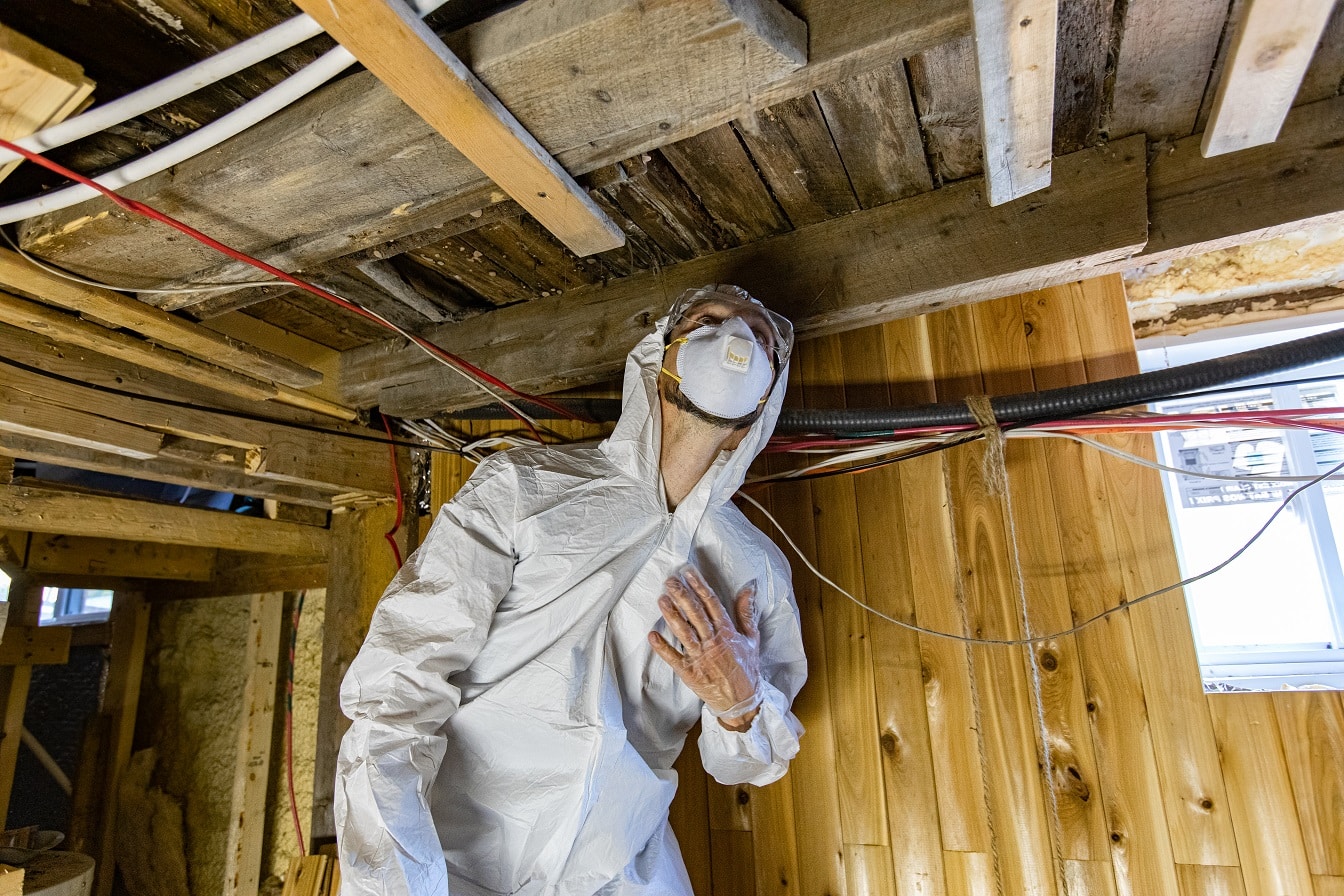Table of Contents

It’s easy for a family to live in a damp, moldy home without knowing. Mold is not always easy to see, but its effects become evident if your family experiences respiratory issues and allergies. Dampness can also create significant structural hazards within the home. Learn more about mold and the dangers of a damp home here.
What Is Mold, and Where Does it Grow?
Mold is a fungus that lives indoors or outdoors on plant or animal matter. It thrives in damp, poorly ventilated areas and reproduces by spores. Mold can grow on a long list of materials commonly found in the home, such as wood, carpet, furnishings, wallpaper and drywall.
Dampness and Your Health
A damp, moldy home can put your family’s health at risk. People living in a home with dampness and mold are more likely to experience asthma, respiratory infections and other respiratory problems.
Mold creates irritants, allergens and, at times, toxins. Touching or inhaling the spores can also result in skin rashes, runny nose, sneezing, red eyes and other allergic reactions. Some people are more likely to experience the negative health effects of dampness and mold, including:
- Elderly people
- Individuals with a weakened immune system
- Children and babies
- Those with existing skin conditions
- Individuals with respiratory issues, such as asthma
Dampness and Your Home
Dampness left untreated can result in serious structural damage to your home. It occurs when too much moisture or water exists in the home’s foundation, floors, walls and other building materials.
Structural damage due to dampness can take place in several ways, including deteriorating masonry, cracking concrete, corroding metal and rotting wood. Moisture weakens the structural integrity of many building materials and can eventually compromise the stability of the home. Structural damage and a possible collapse are dangerous for everyone who lives inside the home.
The mold that grows due to dampness can also penetrate building materials and weaken them. This can be doubly dangerous for your family, potentially causing health problems and putting everyone at risk of serious injury.
Infographic created by Bartley Corp, a concrete foundation company
What You Can Do
There’s typically no need to panic if you see mold or dampness in your home, but it is critical to tackle the issue as soon as possible. Following are a few steps to take to get dampness and mold out of your home.
- Remove moldy items and replace them. This may include furniture, ceiling tiles, carpet, drywall and other materials.
- Fix any roof, plumbing, window or other leaks causing moisture to enter the home.
- Thoroughly clean and dry any areas where dampness or mold is present. An air conditioner, fan or dehumidifier can help dry areas after cleaning them.
- Air out your home on warm, dry days by opening the windows.
- Enlist the help of a professional who has experience removing mold.
Research shows dampness and mold can harm your health and the structural integrity of your house. Learn more about the damage mold can cause and how to prevent moisture in your home in the accompanying infographic.







